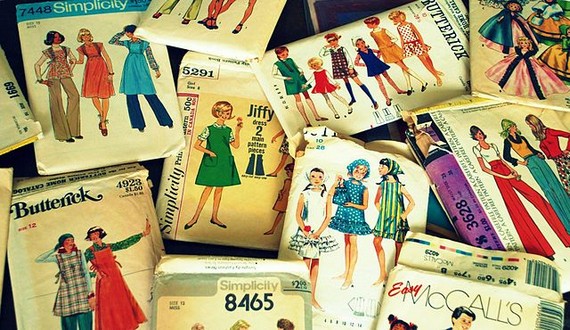Even the most savvy among us often struggle to distinguish between vintage and retro apparel when looking directly at an article of clothing on display.
However, there is a clear distinction between vintage clothes and goods that are considered to be retro apparel in the fashion business. After reading the entire article, you should be able to distinguish between retro and vintage with little trouble. We’ll get into the specifics of those distinctions.
Splitting hairs…or is it?

If you really want to nitpick, you could also use the term “retro” to describe vintage apparel in another context or to describe a piece of vintage furniture. Confused? Just keep reading, and we’ll go right to the point and explain the distinction between vintage and retro.
Technically speaking, we must briefly go in the past to comprehend the distinction between vintage and the synonym “retro.” This is due to the fact that, although if both phrases refer to “old” clothes, it is the relative time period that counts. Let’s first define a few concepts that help you understand the role that time plays in defining the distinction between vintage and retro:
The specifics of what distinguishes vintage from retro

Antique: Strictly speaking, anything that dates back 100 years or more is considered to be an antique. Most likely, this is because they are “antiquated,” which refers to something that is outdated or difficult to recreate. Due to its rarity and difficulty in finding, antique clothing is highly prized.
Vintage: Anything that is 20 years old or older is often considered vintage, as opposed to antiques, which must be at least 100 years old. A piece of clothing must be identifiable to the generation that deems it “vintage” in order for it to qualify as such. Therefore, even if you might not be able to recollect the styles of robes or gowns worn by ladies 100 years ago, it’s highly probable that you will remember what the rave was like in the late 1990s.
The word “true vintage” is another one that’s frequently used to refer to a time when clothing was in style, and it’s important to understand it in order to understand the distinction between vintage and retro. This phrase is frequently used to describe something that is over 20 years old but less than a century old. Most experts use a 50-year cutoff when describing such goods.
Now that we’ve established our periods, it’s time to learn how vintage fashion differs from other styles from that era, such as retro clothes.
The key distinction between vintage and retro

The truth is that “vintage,” “antique,” and “true vintage” are used to define specific time periods, but “retro” style doesn’t have a particular era associated with it. Are you still confused? Let me explain.
When you go to a thrift store searching for vintage items, the attendant will likely direct you to clothing that is at least 20 years old, but not quite 100 years old. If you’re a true vintage enthusiast, you may be led further into the store where you might find items from the 50s or mid to late-1960s.
In contrast, if you ask the attendant to show you her retro clothing collection, she may point you towards the same vintage dress you saw earlier. So what’s the difference between vintage and retro? Why not just ask for vintage and be done with it?
Technically, retro items do not need to be from a specific time period, unlike antiques, vintage, and true vintage items. The key characteristic that qualifies an item of clothing as “retro” is that it is not contemporary – that’s all there is to it!
Old versus new: The difference between vintage and retro

Some people may respond, “Vintage = really, really old, and retro is something not quite new, but still old, regardless,” when asked what the difference between vintage and retro is. While such description does help to clarify the differences between vintage and retro, it falls short of fully elucidating all of their intricacies.
As you can see, even clothes created yesterday can easily be classified as retro apparel. Something is still considered retro as long as it “looks” vintage. Therefore, it would be considered retro style if a designer like Marc Jacobs or Saint Laurent assembled a line of gowns that appeared to date from the 1980s or 1990s.
Why? Because it is intended to seem like something from a bygone age, although being created by a modern designer, it fulfils the description of retro clothes!




